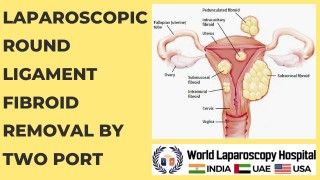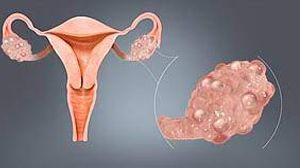Rare Unicornuate Uterus: Laparoscopic Correction of a Non-Communicating Horn
Add to
Share
10 views
Report
2 days ago
Description
At World Laparoscopy Hospital (WLH), a globally recognized center of excellence in minimally invasive surgery, rare and complex gynecological anomalies are treated with utmost precision and expertise. Among these challenging conditions, the Unicornuate Uterus with Non-Communicating Horn stands out as a fascinating yet complex Müllerian duct anomaly that demands both advanced diagnostic acumen and refined laparoscopic surgical skills. Understanding the Unicornuate Uterus A unicornuate uterus is a rare congenital malformation that arises due to incomplete development of one Müllerian duct during embryogenesis. As a result, only one half of the uterus forms properly, leading to a smaller, banana-shaped uterine cavity. In some cases, a rudimentary horn develops on the opposite side, which may or may not communicate with the main uterine cavity. When the horn is non-communicating, it is completely isolated from the main uterine cavity, cervix, and vagina. This condition can cause significant gynecological and reproductive problems such as severe dysmenorrhea, pelvic pain, endometriosis, hematometra, and ectopic pregnancy within the rudimentary horn, which can rupture and become life-threatening. Diagnostic Excellence at WLH At World Laparoscopy Hospital, the evaluation of patients suspected to have Müllerian anomalies is carried out using the most advanced diagnostic modalities. 3D Ultrasonography, MRI, and Diagnostic Hysteroscopy with Laparoscopy are the gold standard techniques utilized to confirm the diagnosis. The surgical and imaging teams work collaboratively to determine whether the rudimentary horn is communicating or non-communicating and whether it contains functional endometrium. This multi-disciplinary approach ensures that the management plan is tailored to the patient’s symptoms, reproductive desires, and future fertility potential. Laparoscopic Management: Precision and Safety The laparoscopic excision of the non-communicating rudimentary horn is considered the standard treatment, particularly when it contains functional endometrial tissue. At WLH, this procedure is performed using high-definition 3D laparoscopic systems and advanced energy-based instruments, ensuring minimal blood loss and a scarless recovery. Surgical Steps Include: Patient Positioning and Access: The patient is placed in lithotomy with Trendelenburg position, and laparoscopic ports are inserted under vision. Identification of the Anomaly: The unicornuate uterus is visualized on one side with the rudimentary horn attached by a fibrous or muscular band. Dissection: Delicate dissection separates the non-communicating horn from the main uterus and the surrounding structures, particularly the fallopian tube and ureter. Resection of the Rudimentary Horn: Using energy devices, the horn is excised along with its fallopian tube to prevent recurrence of symptoms or future ectopic pregnancy. Hemostasis and Adhesiolysis: Careful coagulation ensures hemostasis, and any associated adhesions or endometriotic implants are treated simultaneously. Specimen Retrieval: The excised tissue is removed through a contained endoscopic bag to avoid spillage. This minimally invasive approach reduces postoperative pain, hospital stay, and recovery time, allowing patients to resume normal activities rapidly. Why WLH is a Global Leader in Treating Uterine Anomalies World Laparoscopy Hospital, under the leadership of Dr. R. K. Mishra, is internationally acclaimed for training surgeons and gynecologists from over 140 countries in advanced laparoscopic and robotic surgery. The hospital’s state-of-the-art operation theaters, robotic platforms, and simulation-based learning labs create an environment that fosters precision, innovation, and patient safety. Each surgical case, including rare anomalies like the unicornuate uterus, is managed with an evidence-based, patient-centered approach. Surgeons are trained to not only correct the anatomical defect but also to preserve reproductive potential and minimize postoperative complications. Postoperative Care and Fertility Outcomes After laparoscopic removal of the non-communicating horn, patients experience significant relief from symptoms such as dysmenorrhea and chronic pelvic pain. Moreover, early intervention prevents life-threatening complications like rudimentary horn pregnancy. Women with a unicornuate uterus can still conceive naturally; however, they require close obstetric monitoring during pregnancy due to higher risks of preterm labor, malpresentation, and miscarriage. The team at WLH provides ongoing reproductive counseling and care to optimize maternal and fetal outcomes. Training and Research in Rare Gynecologic Surgery Beyond patient care, WLH serves as a teaching hub where surgeons learn to identify, document, and manage rare uterine anomalies through live demonstrations, video lectures, and hands-on sessions on high-fidelity simulators. The hospital regularly publishes case studies and surgical videos that contribute to the global understanding of complex laparoscopic gynecology. Conclusion The management of Unicornuate Uterus with Non-Communicating Horn at World Laparoscopy Hospital exemplifies the synergy of technology, surgical expertise, and compassionate care. Through precise laparoscopic excision and comprehensive fertility counseling, WLH not only restores health but also renews hope for women facing this rare congenital condition.
Similar Videos






